The Future is Social: Trends and Opportunities for Community Builders
- Ryan Mayne
- 111 Comments
- Reading Time: 15min
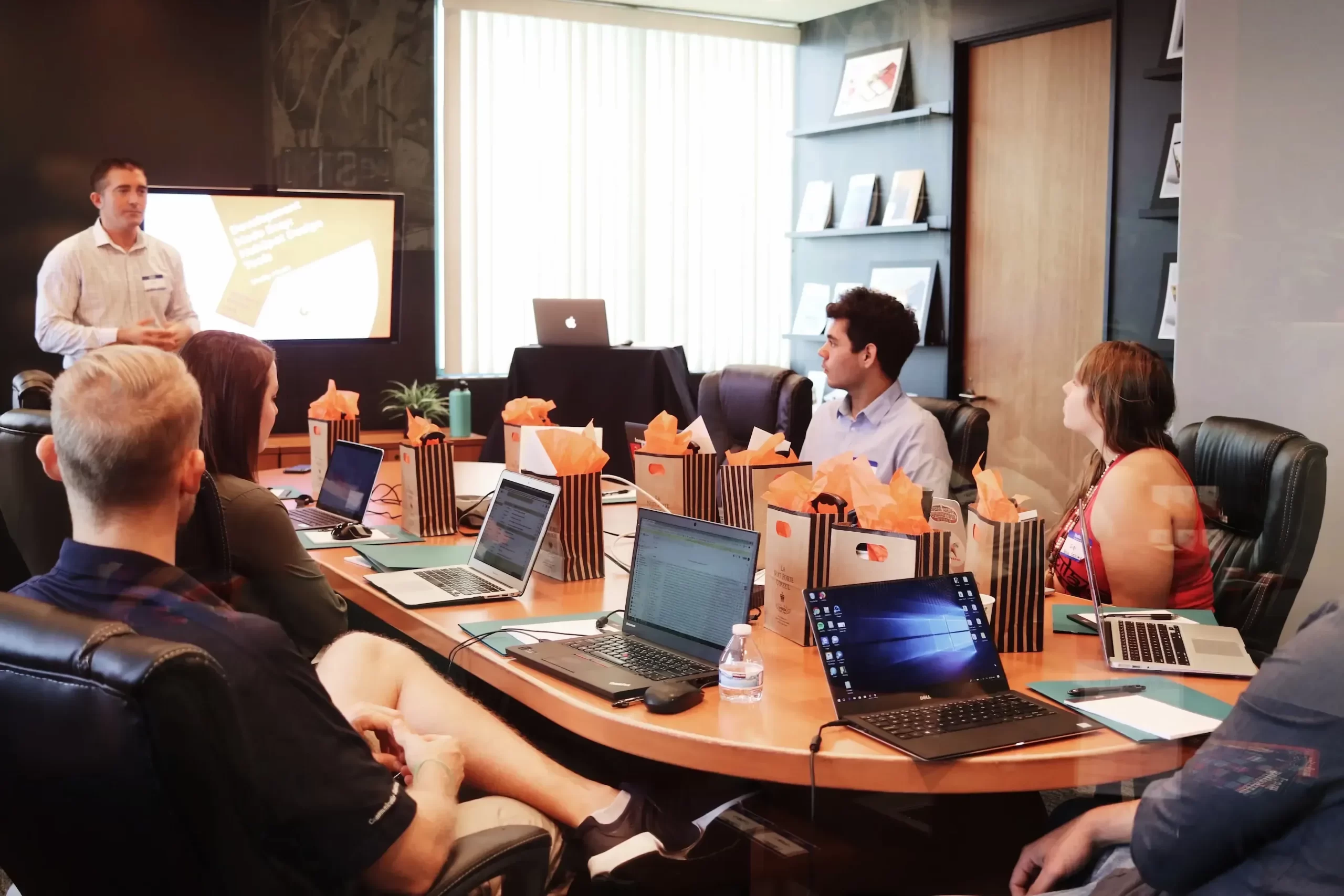
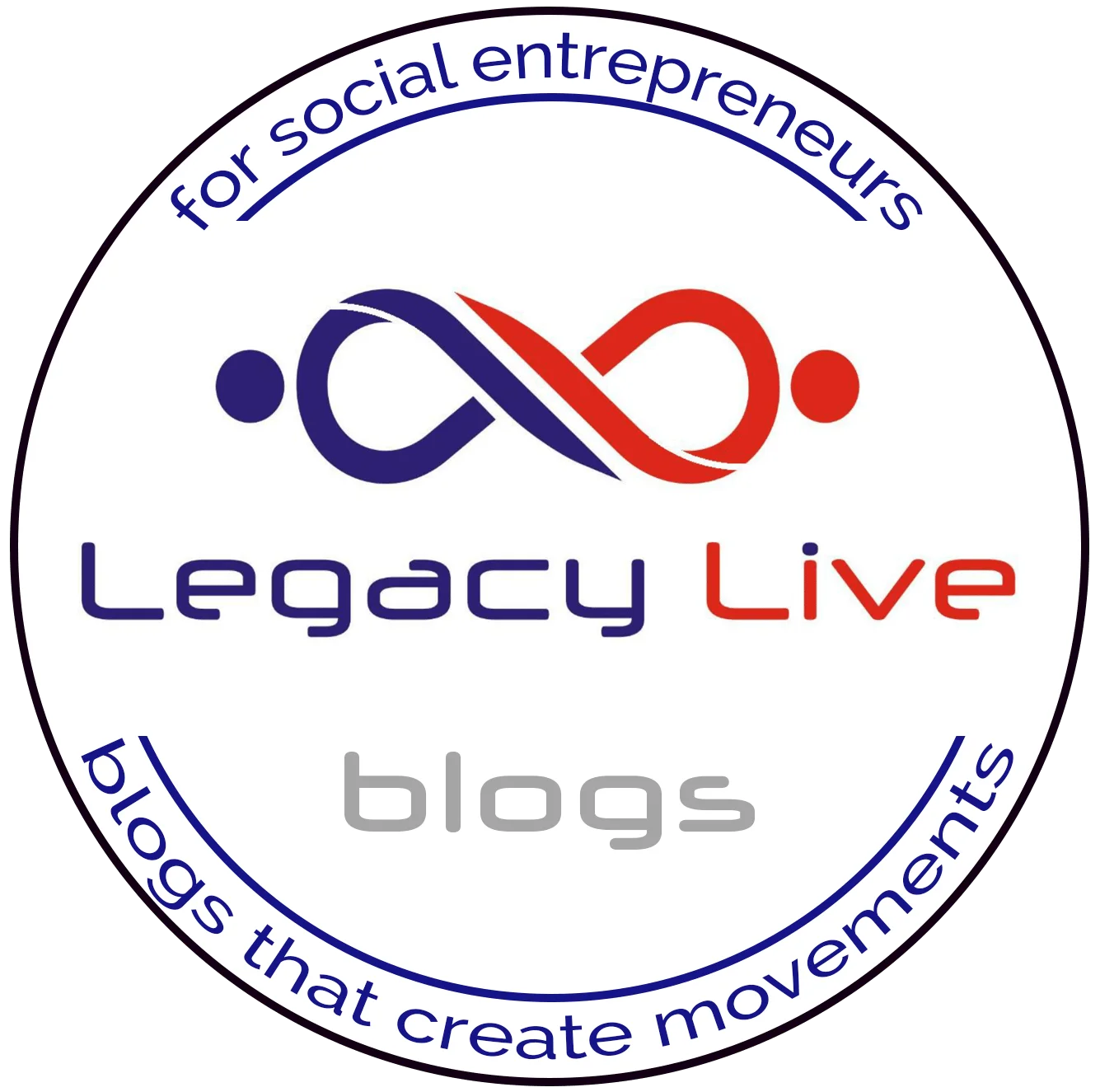
From this Blog
- Insights into trends in online community technology
- Demystifying cybertech and making it accessible
- Strategies for establishing thriving online communities
- Sociology for understanding online communities
- How to leverage cybertech to create a deep and powerful connection-fueled movement
- Practical tactics for leveraging virtual communities to create real-world impact

Innovations in Connection: Community meets Cybertech, where the future of social impact unfolds through the lens of online communities.
I’m Ryan Mayne, a seasoned community development leader for 21 years and a tech enthusiast with a B.Hons in Psychology. Join me as I guide you through the international waters of cyberspace to find sustainable solutions for the communities we can physically see and those we would otherwise never know existed.
Since my youth I’ve been passionate about harnessing technology to transform communities. This passion led to the inception of a social impact business that fuses coding with market positioning and community management. I have learned many rich lessons along the way.
I left all safety and comfort behind to embark on this path. At times it has felt like a failed mission that cost me everything to lead nowhere, and then there were the rewarding and victorious moments that I’m sure you know well. This path tests the heart but for the social entrepreneur it is the only path, it’s in our DNA to bring life to the solutions we so restlessly carry.
I was a part time community development leader until a turning point. I had co-led a community of AIDS-impacted families to establish a thriving, community-led, self-sustaining, support and actualisation ecosystem for them. I felt great about what we had achieved and left the project in the hands of a capable team. Years later, to my dismay, I returned to discover a community no different to before I had first encountered it. In this blog post you will discover emerging technologies that may have all but ensured that this initiative was sustained.
Over the years I’ve discovered a community of new and emerging social entrepreneurs that are equally passionate about finding hidden solutions between online communities and real-world changes. These solutions are birthed in virtual spaces where people worldwide come together to support each other and make a real difference. They are also the birthplace of flourishing movements.
It is here that this blog carves out its unique contribution, at the intersection of technology, sociology, and human interaction.
There are opportunities reserved for those who have a deep understanding of sociology as well as opportunities only afforded to those who can successfully navigate unfamiliar technologies. My mission is to open both worlds of opportunity up for you, but, more than that, to invite you into a community of people who know the road of the social entrepreneur.
We start here and now. I believe that this blog post will clarify emerging trends and introduce some sociological factors that make them work. It will bring these factors together with some practical steps to start leveraging these emerging innovations for vision-driven community engagement.
TOOLS AND FEATURES FOR ENGAGEMENT AND BELONGING
We will start our journey with technologies you may have already heard about. Let us take a snapshot at what is making the most impact at present:
- Live audio and video platforms like Discord, Clubhouse, and Twitter Spaces foster a sense of immediacy and authenticity, allowing for deeper conversations, debates, and shared experiences.
- Micro-communities and subgroups are carving out niche spaces within larger platforms, catering to specific interests and fostering a sense of belonging. These smaller communities provide a more intimate setting for members to connect, share knowledge, and build deeper relationships.
- Community gamification and rewards programs are introducing an element of fun and competition, motivating users to participate and contribute to the community. Points, badges, and leaderboards incentivise engagement, keeping members actively involved and fostering a sense of accomplishment.
- Integrated content creation and sharing tools are empowering community members to become active contributors. Platforms are embedding tools that allow users to easily create and share content directly within the community, reducing friction and encouraging participation.
- Membership and subscription models are emerging as sustainable revenue streams for community platforms. These models provide exclusive content, benefits, and perks for dedicated members, while also supporting the platform’s growth and development. This has been one of our early focus areas at Legacy Live, where we have started to offer customised onboarding and user management flows for international academic associations.

Staying connected in micro-communities: what’s really going on behind the off camera?
TRENDS IN ONLINE COMMUNITIES
Tools are only as good as the way in which we use them. Here are some of the ways in which existing tools and features are being used to make the most impact:
- Personalisation and customisation. By allowing users to tailor their own experiences, users can navigate communities that are more aligned with their unique needs and preferences, fostering a deeper sense of belonging and engagement.
- Authenticity and meaningful connection are driving forces behind the evolution of online communities. As users seek deeper interactions, platforms are facilitating authentic engagement opportunities, fostering genuine connections and a sense of shared purpose.
- Data-driven insights. These insights enable managers to optimise engagement strategies, identify emerging challenges, and make data-driven decisions that foster thriving communities.
- Mental health and well-being are gaining recognition as essential aspects of online community health. Platforms are implementing features and resources that support the mental health and well-being of their members, recognising the importance of mental health in creating thriving and supportive online spaces.
The rise of online communities reflects a fundamental shift in human connection, as we increasingly turn to online spaces to find belonging. Niche communities offer a sense of belonging that’s hard to find elsewhere. As we start to implement these trending tools, tactics and strategies we can expect our communities to grow in both number and health, but what does a healthy community really look like?
IS MY ONLINE COMMUNITY HEALTHY?
In the ever-evolving digital landscape, online communities have become pivotal hubs for connection, collaboration, and meaningful impact. Likes, comments, and shares don’t offer deep-level understanding of a community’s health or future. To truly gauge the well-being of an online community, we need to understand the dynamics that define its vibrancy and sustainability.
We should envision online communities as living organisms, thriving on the collective energy and interactions of its members. It is more than the sum of its parts. It must solve both short-term and long-term needs through a harmonious interplay of practical engagement, genuine connection, and meaningful purpose.
Moving Beyond Vanity Metrics
Traditional metrics (likes and followers) fall short in capturing the essence of a thriving community. Online communities demand a nuanced approach to evaluation.
Key Considerations for Community Health:
- Diversity Ratios: Analyse member demographics, participation patterns, and content diversity to ensure inclusivity and representation as relates to the refined target niche. Do they represent how your niche is represented in the real world?
- Meaningful Engagement: Are members connecting, collaborating, and learning from each other in a meaningful way, independent of the community manager’s involvement?
- Community-Driven Governance: Do members actively shape the community’s direction?
- Transparency and Trust: Does the community operate openly, fostering trust among members?
- Perseverance of Interest: What is the average lifespan of active users in the community?
- Mental Well-being Indicators: Track sentiment analysis, support resource utilisation, and harassment reports to identify potential issues and foster a supportive environment.
- User Satisfaction Surveys: Gather direct feedback on community experience and potential improvements.
From a sociological standpoint, online communities serve as microcosms of society, reflecting power dynamics, social norms, and cultural influences.
The health of online communities transcends numerical metrics; it’s a mirror of the collective well-being, engagement, and impact of its members. Embracing a holistic approach to measurement allows us to identify and nurture the factors contributing to sustainable, vibrant online communities that empower individuals and drive positive change.
By shifting our focus from our own reputation to the experiences of our members we will naturally serve them better and optimise the sustainable growth of our communities.
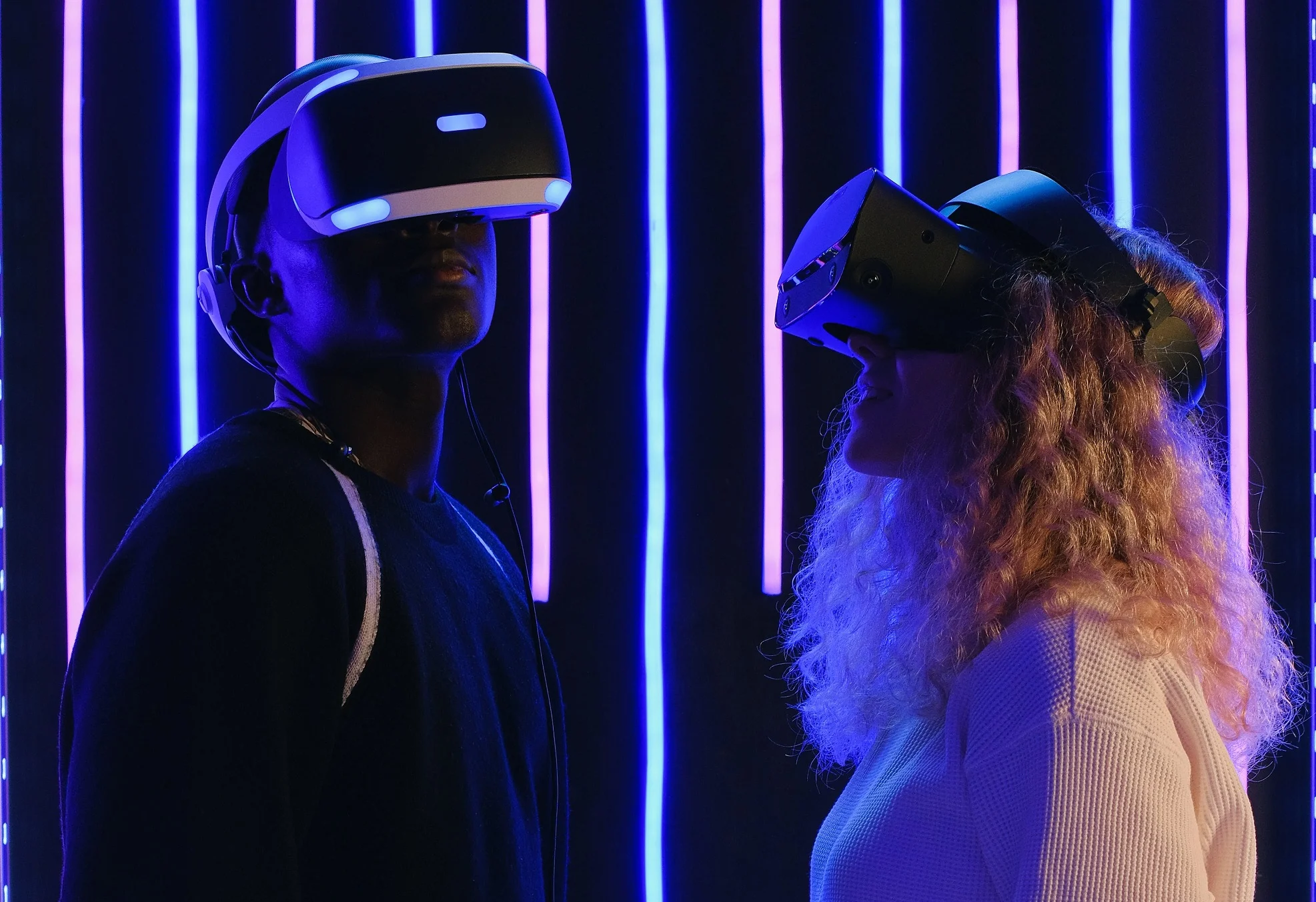
Staying connected through new technology: who are we really connecting to?
TOP TRENDS IN CYBERTECH TO LOOK FOR
Emerging Cyber Technologies
I remember a good friend giving me a pair of virtual reality goggles once — expensive ones, too. She gave them to me because she didn’t know what to do with them. It felt like I was holding a piece of an alien ship and had no idea how to use it, only that one day I would. Business is about strategy and intentionality. Once you have fully embraced the technologies that are already mainstream, the next pressing question is, “How do I position myself for the coming technological revolutions?”
The next wave of web revolutions (let’s call it Web3) is fast approaching and we are all going to get wet sooner or later. The refreshing truth, though, is that social entrepreneurship is the most exciting place to be standing for this wave. So let’s dive in.
To fully understand Web3, we need to understand the problems it addresses by looking at the history of the Web.
- Web1 (1990s): The foundation was laid by making academic research and email publicly accessible. The web’s potential for societal transformation was hinted at, but the concentration of control raised concerns about inclusivity and equitable access.
- Web2 (2000s): The focus shifted to user-generated content and social connection with the emergence of social media platforms. The combination of positive social feedback cues and the personal investment of time and creativity led to users’ sense of community and belonging gradually migrating to these online spaces. The democratisation of content creation also welcomed new challenges for managing information and meaningful interactions amidst the vast sea of user-generated content.
- Mobile Computing (2010s): The rise of mobile computing expanded the internet’s user base and destroyed the final lifestyle barriers that separated the real world from the virtual world.
These trends were shadowed by tech addictions, security and privacy concerns, social divisions, mistrust, and echo chambers. Web3 is a pushback against the perpetuation of these societal pains that have haunted the web’s evolution.
Web3: 3 Distinct solutions
The web has consistently pushed the boundaries of human connection and interaction. We are now on the cusp of a new era. This transformative revolution involves three distinct parallel and simultaneous paths of innovation.
AI-powered Community Management. Artificial intelligence (AI) is being integrated seamlessly everywhere, automating tasks and providing valuable insights to community managers. AI-powered tools can already moderate content, provide customer support, and analyse community data, allowing managers to focus on strategic initiatives and personalised member interactions. This integration of AI streamlines community management, enhancing its efficiency and effectiveness.
It’s easy to predict the broader effect of AI on community management environments. It starts by understanding three of the main priorities held by the big corporates that manage online spaces. These are value to the user, time spent online, and revenue (mostly through data and advertising).
AI serves these priorities by improving the quality of the connections made between users and what they really want, already illustrated by TikTok’s current AI algorithm. This means that social entrepreneurs will be rewarded with more user influence and attention if they focus on a narrow niche of only those users they can best serve.
It is helpful for brands to start conceptualising themselves as serving multiple micro niches instead of one broad niche. This will also require reconceptualising what truly makes them unique and what is the core of their brand that must never change.- Decentralised communities. Imagine a world where communities have the power to decide their own rules, hold their discussions in the open, and work together without fear of censorship. This is the promise of decentralised communities, and it’s likely to be the next trend to starts gaining momentum in the online world. There are already many social platforms dedicated to this kind of interaction, and it’s not Facebook, LinkedIn, or Twitter (yet).
Decentralised communities are leading the way to more democratic and equitable online experiences. They are built on the idea that everyone should have a say in how things are run. This means less censorship and manipulation, and more space for diverse voices to be heard.
It marks a shift from mindlessness to empowerment; instead of passively consuming content, users in decentralised communities can become active participants. They can build tools, share resources, and contribute to the decision-making process. This creates a sense of ownership and responsibility, leading to stronger communities.
Decentralised communities can automatically manage tasks, digital resources (such as finances), moderation and access, based on the rules and values agreed upon by the community. It ensures transparency and complete alignment with the community’s values. This can save time and resources. It can also help to reduce bias, human error, blind spots and corruption. This is why these structures have become magnets for funding opportunities.
How could such communities benefit your target audience? Could they be used to facilitate collaboration, share resources, or raise funds for a social causes? By understanding this trend and taking steps to prepare for it, social entrepreneurs can position themselves as leaders in the new digital landscape.
Metaverse. The metaverse is a conceptual idea for a shared, immersive virtual world that is interconnected and persistent. It is a convergence of physical and digital spaces, where users can collaborate and engage in a wide range of activities as if they were physically present in the same space.
Where virtual reality allows for immersive digital experiences, other related technologies allow for users to interact with a virtual world that is projected onto (and interacts with) the real world they see. Where mobile screens moved some of our virtual attention from desktop screens, this will move some of our virtual attention off our screens altogether but in so doing increase our time spent in virtual spaces.
There is still a lot of work to be done before the metaverse becomes readily accessible; however, with Microsoft, Meta and Google collectively spending hundreds of billions of dollars on this technology, we may well see this technology suddenly entering mainstream society at some point. When it does, it has the potential to revolutionise the way communities can gather, socialise, and participate in shared experiences, allowing for the formation of more influencial bonds, collaborations and lenses through which we see the world.
The metaverse could encourage a disconnect from the real world (and from the meaningfulness of tangible change); however, it conversely introduces an opportunity to make a movement’s vision an immersive experience and to help one’s community to see the real world — along with its threats and opportunities — through the lenses of such a vision. It is where the power of storytelling and shared narratives will truly come to life as a super-tool in establishing a sense of collective identity, purpose and strong community bonds. For this to work effectively for social change we should already start thinking about our vision in terms of an immersive experience.
Social entrepreneurs play a pivotal role in shaping Web3, ensuring that its innovations align with ethical principles and promote positive societal impact. They must carefully navigate the opportunities and threats, embracing the potential while remaining mindful of the risks.
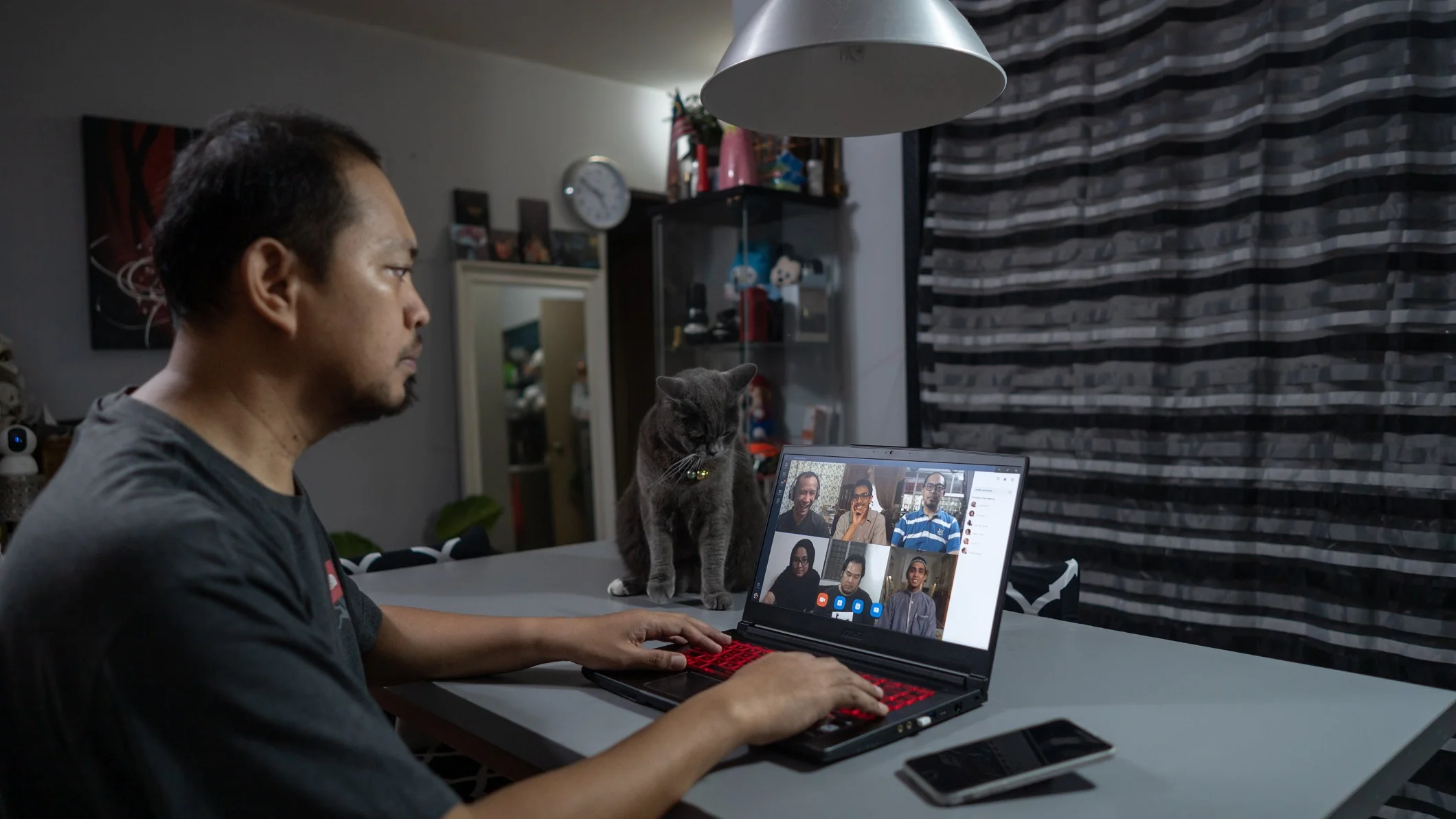
Which opportunities will we lead our people to through technology?
What this Means for Social Entrepreneurs
Threats
- Inclusivity and Equitable Access Concerns: By not adapting to these new trends we will lose the agency and self-determination that are on offer. We may also become less relevant to the needs of new and emerging global societies.
- Tech Addictions, Security, Privacy Concerns, Social Divisions, Mistrust, and Echo Chambers: The trends of the 1990s to the 2010s were shadowed by various issues. For social entrepreneurs to navigate and address these, we need to consider how we can adopt solutions and leverage Web3 technologies.
- Potential Loss of Tangible Change (Metaverse): The immersive experiences of the metaverse will give society a false sense of real change as is seen with Second Life app, a virtual reality simulation app that has consumed people’s attentions and life earnings. This illusion of real change could potentially minimise the perceived meaningfulness of tangible change. To mitigate this we need to consider multi-dimensional experiences of tangible problems along with tangible change.
- Shift in Focus or Loss of Focus (Augmented Reality): Augmented reality could either shift focus from the screen to the real world or lead to the loss of focus altogether. Social entrepreneurs will need to navigate the impact of augmented reality on user attention and engagement.
- Narrowing of Focus and Homogeneity: AI-powered targeting could incentivise social entrepreneurs to focus on narrower target markets. Combined with the effect of decentralised communities, this could potentially leading to smaller, less diverse communities in which people feel uncomfortable with sharing a different opinion.
Opportunities
- AI-Powered Community Management: The integration of AI in community management presents an opportunity for social entrepreneurs to enhance efficiency and personalise interactions. It allows them to focus on strategic initiatives and meaningful member interactions.
- Seeing Connections: AI and augmented reality can be used to sift through the noise to identify shared purpose and common ground.
- Narrowing Focus on Target Market: As online community groups start narrowing in focus, and as communities become more self-directed, new opportunities will arise to forge complex alliances, share resources, and collectively address societal challenges while staying true to our brand values.
- User-Created Structures for Decision Making: User-created structures within decentralised communities can automate decision-making and ensure alignment with the community’s vision and values. Social entrepreneurs can leverage this to create more engaged and purpose-driven communities.
- Funding and Decentralised Communities: The use of decentralised automomous organisations may attract more funding as a result of its structurally enforced integrity, transparency and accountability.
- Metaverse for Deeper Engagement: The metaverse offers the opportunity to facilitate more meaningful bonds and collaborations in a virtual space.
- Immersive Experience for Movement Visions: The metaverse provides an opportunity for social entrepreneurs to make a movement’s vision an immersive experience. It can help communities to see the real world through the lenses of a shared vision and potentially drive tangible change.
- Movement Leadership: By integrating the most relevant technologies in preparation for their mainstream use, value-based social entrepreneurs can position themselves as safe havens for their members when it comes to issues of societal changes in virtual spaces.
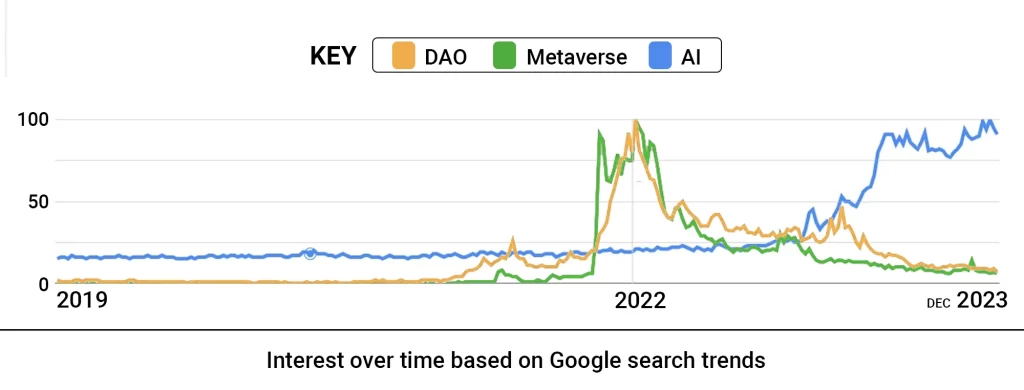
AI-Assisted Community Management
Social entrepreneurs with no technical background can make use of AI for community management in several ways, starting with the following tools:
- Start with AI-powered chatbots for basic customer support and FAQs
(Landbot.io, Chatfuel)
- Understand how your community interacts with your brand with sentiment analysis and business intelligence (Social Mention, Brand24, or more advanced tools such as Keyhole, Power BI)
- Leverage AI-powered content moderation + use AI-powered recommendation engines to personalise user experiences. This technology has not yet become mainstream and, although available, requires a strong technical background. My advice to you: wait on this one.
Decentralised communities
There are a number of examples of Decentralised autonomous organisations (DAOs) that are already operating and demonstrating the potential of this technology. These DAOs address a variety of objectives, such as investing, funding, and governance. MolochDAO is one such DAO, which uses a deep feedback voting system (voting measures preference strength and direction) to make decisions. It has funded a number of public good projects, including the development of decentralised tools and infrastructure.
I would recommend starting small and experimenting with the below platforms: don’t try to build a fully-fledged decentralised community overnight. Start with a pilot project and see how it goes.
The following platforms make it easy to create and manage a DAO without any technical expertise:
- Aragon: It’s one of the easiest to use and supports a wide range of DAO objectives. It provides ample resources and documentation to guide users through the process of creating and managing a DAO.
- Snapshot: Snapshot specialises in making voting in DAOs more secure and accessible.
- Boardroom: Boardroom’s is one of the more technical of these 3 but still relatively intuitive and easy-to-use. It helps DAOs create and manage compensation systems for their contributing members.
If you get stuck, feel free to drop a question in these comments or to tag me in a post on Twitter @aLegacyFounder.
The Metaverse
The Metaverse is still going to go through many growing pains and the required devices are not yet mainstream. Your time investment will likely yield more results if you wait another 2 years. If you do want to know more about what’s already publicly accessible in this space, you might want to have a look at AltspaceVR or VRChat (for casual social interactions), and CoSpaces Edu (for educational use).
CONCLUSION
As we embark on this exploration of the future of social impact through online communities, we find ourselves standing at the intersection of technology, sociology, and human connection.
The evolution of online communities mirrors a broader shift in how we seek and establish connections, challenging us to rethink traditional notions of belonging and collaboration. The sociological dimensions we’ve explored – social cohesion, collective identity, and cultural norms – underscore the profound impact these digital spaces have on shaping our societal fabric. We play a vital role in building truly healthy communities that are diverse, meaningful, community-driven, transparent, engaging and promote mental well-being.
The trends we’ve uncovered, from the use of present day tools and features to the immersive experiences of the metaverse, reveal a landscape ripe with opportunities for social impact entrepreneurs and community builders.
The horizon of social impact in online communities calls us to blend futurism with social patterns of the recent past, ensuring that as we forge ahead as leaders for social good; we do so with a profound understanding of the intricate dance between technology, humanity, and the collective drive for positive change. We have the power to unite individuals around shared passions, amplifying their voices as well as the power to separate and alienate. In my next blog post I will explore the humanisation of innovations in connection.
In the comments, I invite you to discuss your thoughts on this question: “How fast should we run towards adopting the coming changes in cyber technology?”
Key Takeaways
Online communities are becoming increasingly important for social impact movements.
Emerging technologies, such as Web3 and the metaverse, offer new opportunities for online communities. Now is the best time to start experimenting with them.
By mastering the online community space social entrepreneurs are natural forerunners in emerging cyber technologies and we can help determine how they will be used.
To discuss in the comments: How fast should we run towards adopting the coming changes in cyber technology?
share this post…
Join the Community
Sign up for my newsletter to stay up-to-date on the latest trends in online community development and receive a special invitation to this growing community. Let’s shape the future of social impact together.
SUBSCRIBE TO THE LIVING LEGACY BLOG
VISION & MISSION
Our golden thread
MISSION
- We build a home for your people (community platforms)
- Get them living there (community management)
- Capacitate you to lead online (saas systems)
Global businesses are quickly moving past orphaned approaches to embrace interconnected entrepreneur cultures in which social impact matters more than ever. Legacy Live is devoted to creating the digital infrastructure that fully supports this impact movement.
We specialise in positioning social entrepreneurs, both locally and abroad, as leaders in the solution they best provide. Our role is connecting our clients with the people they most need to connect with, through market positioning, web development and community management.
With a team comprising top percentile minds in IT, design, consumer behaviour, and social impact entrepreneurship, Legacy Live offers a deep understanding of our clients’ needs and the ability to bridge them.
4 CORE PRODUCTS
- Membership and Community Platforms
- Community Management
- Integrated Business Intelligence systems
- Market Positioning and Digital Client Journey Architecture
VISION
We see businesses that have discarded orphan-attitude approaches to embrace an interconnected entrepreneur culture whereby businesses work together to achieve greater levels of innovation and cross-generational impact. Legacy Live is devoted to creating the digital infrastructure for this vision. How we partner with each client is essential to establishing these new standards.
We see the nonprofit sector operating in a 3D deep connection experience: Members feel thoroughly connected to each other and to the organisation both online and through geographic networks; and nonprofits connect to each other through symbiotic evolving partnerships. The fruit of these deep connections will include legacy management, deep function refinement, resource optimisation, holistic support systems, and momentum. It will lead to nonprofit-centric approaches to sustainability that don’t require borrowing from the corporate sector.
WE KEEP ONE THING CONSTANT: We pay the P.R.I.C.E. for Purpose, Reformation, Integrity, Connection, and Excellence
You need to be signed in
to use this feature
111 Responses
The offer is still valid. Details https://zetds.seychellesyoga.com/jml
Content for your website https://zetds.seychellesyoga.com/info
Web Development Wizards https://zetds.seychellesyoga.com/info
Can provide a link mass to your website https://zetds.seychellesyoga.com/info
Your site’s position in the search results https://zetds.seychellesyoga.com/info
Free analysis of your website https://zetds.seychellesyoga.com/info
Content for your website https://zetds.seychellesyoga.com/info
Web Development Wizards https://zetds.seychellesyoga.com/info
Web Development Wizards https://zetds.seychellesyoga.com/info
Can provide a link mass to your website https://zetds.seychellesyoga.com/info
Your site’s position in the search results https://zetds.seychellesyoga.com/info
Free analysis of your website https://zetds.seychellesyoga.com/info
SEO Optimizers Team https://zetds.seychellesyoga.com/info
I offer mutually beneficial cooperation https://zetds.seychellesyoga.com/info
Cool website. There is a suggestion https://zetds.seychellesyoga.com/info
Here’s what I can offer for the near future https://zetds.seychellesyoga.com/info
You will definitely like it https://zetds.seychellesyoga.com/info
Content for your website https://ztd.bardou.online/adm
Web Development Wizards https://ztd.bardou.online/adm
Can provide a link mass to your website https://ztd.bardou.online/adm
Your site’s position in the search results https://ztd.bardou.online/adm
Free analysis of your website https://ztd.bardou.online/adm
SEO Optimizers Team https://ztd.bardou.online/adm
I offer mutually beneficial cooperation https://ztd.bardou.online/adm
Cool website. There is a suggestion https://ztd.bardou.online/adm
I really liked your site. Do you mind https://ztd.bardou.online/adm
Here’s what I can offer for the near future https://ztd.bardou.online/adm
Content for your website https://ztd.bardou.online/adm
Web Development Wizards https://ztd.bardou.online/adm
Can provide a link mass to your website https://ztd.bardou.online/adm
Your site’s position in the search results https://ztd.bardou.online/adm
Free analysis of your website https://ztd.bardou.online/adm
SEO Optimizers Team https://ztd.bardou.online/adm
I offer mutually beneficial cooperation https://ztd.bardou.online/adm
Cool website. There is a suggestion https://ztd.bardou.online/adm
Content for your website http://myngirls.online/
Web Development Wizards http://myngirls.online/
Can provide a link mass to your website http://myngirls.online/
Your site’s position in the search results http://myngirls.online/
Free analysis of your website http://myngirls.online/
SEO Optimizers Team http://myngirls.online/
I offer mutually beneficial cooperation http://myngirls.online/
Content for your website http://fertus.shop/info/
Web Development Wizards http://fertus.shop/info/
Can provide a link mass to your website http://fertus.shop/info/
Your site’s position in the search results http://fertus.shop/info/
Free analysis of your website http://fertus.shop/info/
SEO Optimizers Team http://fertus.shop/info/
I offer mutually beneficial cooperation http://fertus.shop/info/
Cool website. There is a suggestion http://fertus.shop/info/
I really liked your site. Do you mind http://fertus.shop/info/
Here’s what I can offer for the near future http://fertus.shop/info/
You will definitely like it http://fertus.shop/info/
The best prices from the best providers http://fertus.shop/info/
Additional earnings on your website http://fertus.shop/info/
Analytics of your website http://fertus.shop/info/
I would like to post an article http://fertus.shop/info/
How to contact the administrator on this issue http://fertus.shop/info/
Shall we exchange links? My website http://fertus.shop/info/
I pretty admire your articles, your thoughts and specially your efforts to write it. Thank you for such article.you can also refer my work.
꽁머니환전
The offer is still valid. Details http://fertus.shop/info/
We offer cooperation on SEO optimization http://fertus.shop/info/
Content for your website http://fertus.shop/info/
Web Development Wizards http://fertus.shop/info/
Your site’s position in the search results http://fertus.shop/info/
Content for your website http://fertus.shop/info/
Can provide a link mass to your website http://fertus.shop/info/
Free analysis of your website http://fertus.shop/info/
I offer mutually beneficial cooperation http://fertus.shop/info/
Ace of Base — шведская поп-группа, образованная в 1990 году. Их музыкальный стиль сочетает в себе элементы поп-музыки, дэнса и электроники. Группа стала популярной благодаря хитам “All That She Wants”, “The Sign”, “Don’t Turn Around” и “Beautiful Life”. Эти композиции не только покорили чарты во многих странах мира, но и остаются классикой жанра до сих пор. Ace of Base оставили неизгладимый след в истории поп-музыки, их мелодии до сих пор радуют слушателей по всему миру. Скачать музыку 2024 года и слушать онлайн бесплатно mp3.
You’ve made some good points there. I looked on the net for additional information about the issue
and found most people will go along with your views on this
website.
cialis prezzo farmacia low dose cialis cialis bph indication
tadalafil covid cialis generika nebenwirkungen tadalafil farmacias similares
tadalafil side dosage lilly cialis 5mg tadalafil generika wiki
tadalafil daily 5mg cialis original use tadalafil grapefruit juice
proper cialis dosage cialis coupons walgreens cialis daily
tamsulosin tadalafil combination generic tadalafil otc dose de cialis
testa viagra sildenafil dose ed lloyds viagra cost
viagra feminino existe viagra prices dallas sildenafil precio mexico
duodart y viagra viagra suisse mail order sildenafil
I really like what you have bought here, certainly like what you are stating and 핑크알바 the best way in which you say it. You are making it enjoyable and you continue to take care of to stay it wise.
cialis tablet sizes female cialis dose natural tadalafil production
tadalafil contraindications cialis professional cialis coupons walgreens
viagra uk paypal sildenafil citrate patent sildenafil formula
tadalafil 10mg dosage tadalafil 20mg pictures cialis price egypt
viagra chest pain viagra teeth hurt women viagra users
cialis en madrid canadian pharmacy cialis cialis generic date
viagra femenino existe viagra facts viagra new commercial
valor do tadalafil cialis generisk cialis tadalafil mexico
viagra kostprijs sildenafil citrate problems viagra cost heb
tadalafil virkningstid typical tadalafil dosage generic daily cialis
cialis daily dosage cialis which company cialis 20mg effects
viagra compendium viagra similar meds viagra pharmacy cost
tadalafil teva cena official cialis website tadalafil circulation
how to.get viagra viagra krem sildenafil cas
compare prices cialis cialis tablets cost cialis coupons 2022
watermelon viagra recipe viagra top brands viagra starting dosage
viagra drugs viagra effect duration viagra site reviews
levitra eestis levitra vardenafil nebenwirkungen levitra vision problems
viagra weight loss viagra hatása sildenafil user reviews
levitra opakowania vardenafil coupon levitra cenas
viagra duration viagra target pharmacy viagra hotline
viagra questions sildenafil tabletten rash from sildenafil
viagra connect dose blue vision sildenafil sildenafil goodrx coupon
levitra cost nz vardenafil vs sildenafil levitra alternative
viagra and vision viagra and vitamins jake gyllenhaal viagra
viagra plus viagra pills priceline women take sildenafil
lover vardenafil 10mg vardenafil uk vardenafil maximum dose
viagra vision changes sildenafil daily use sildenafil get roman
viagra prezzo ammesso honey bee viagra online viagra cost
viagra oppure levitra vardenafil ou tadalafil levitra with diabetes